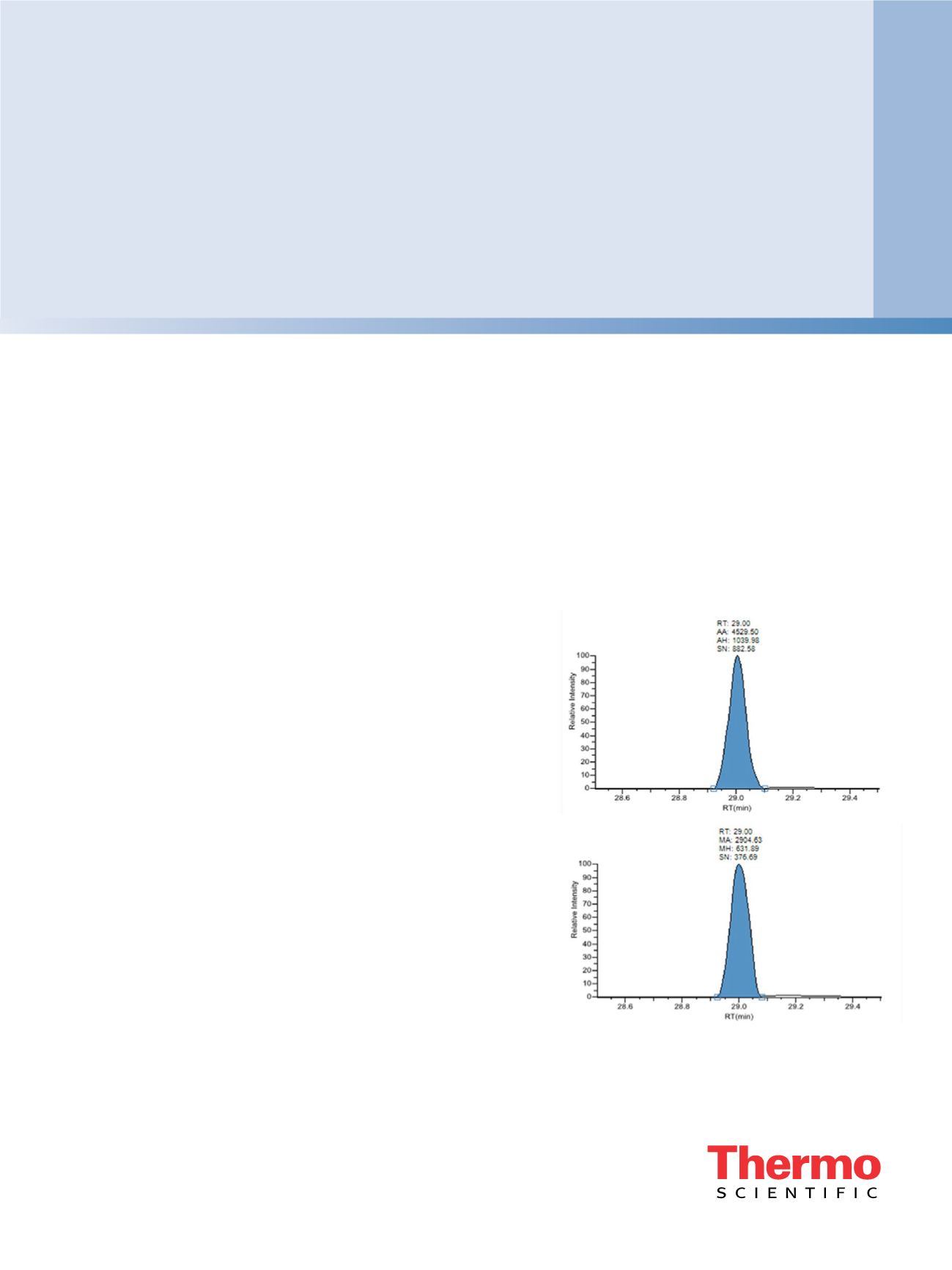
Chemical Ionization Meets
MS/MS Simplicity
Application Brief 52362
The Thermo Scientific TSQ 8000 triple quadrupole
GC-MS/MS is built with simplicity as a top priority.
Whether you are managing retention times, starting from
the beginning with a completely new analysis, transferring
a method from a single quadrupole GC-MS, or porting
a known MRM method from another instrument, the
TSQ
™
8000 GC-MS/MS, through its integrated software
tools, ensures the fastest route to high performance
results, routinely.
This simplicity allows you to take advantage of the benefits
of MS/MS especially when you require more flexibility
from your system. Chemical ionization (CI) is an example;
sometimes you need a different way of addressing the
unique chemistries facing you in a particular application.
This less frequently used technique can lead users to feel a
little uncertainty in set-up and method development of CI
methods. With the TSQ 8000 GC-MS, the uncertainty can
be removed; as the system takes care of the critical aspect
of method development and set-up, allowing you to
proceed with sample analysis.
Where Can CI be Applied in GC-MS/MS?
Generally, the best chance of high sensitivity in MS/MS
occurs when the precursor ion can be selected from a
single high mass ion which carries a significant amount of
the ion current. Electron impact Ionization (EI), although
universal, is a high energy process that, in a lot of cases,
leads to extensive source fragmentation in less stable
compounds. This moves us away for the ideal situation
for MS/MS. Since chemical ionization is a softer form
of ionization, it offers an opportunity to generate more
abundant high mass ions.
CI can also offer a higher degree of selectivity or sensitivity
in the source ionization process too, especially with
negative chemical ionization (NCI), favoring electronega-
tive compounds such as halogenated species.
Examples for routine analysis using positive chemical
ionization (PCI) include applications with target com-
pounds such as phthalates and nitrosamines (US EPA
Method 521). PCI is also applied to compound elucida-
tion taking advantage of pseudo molecular ion formation
and subsequent MS/MS structural characterization. The
obtained data can help screen and confirm any compound
candidates obtained through EI spectra and library
searching. This is especially useful in conjunction with a
direct sample probe, which enables the user to place a
sample directly into the source for immediate identification
of chemical reaction products.
Applications reported using NCI sometimes include
organochloro pesticides (especially pyrethroids), some
persistent organic pollutant (POPs) applications like
short chain chloropariffins, toxaphenes, and brominated
compounds such as polybrominated diphenyl ethers
(PBDEs).
Figure 1. PBDE 209 at 2.5 ppb using NCI on the TSQ 8000 GC-MS System


